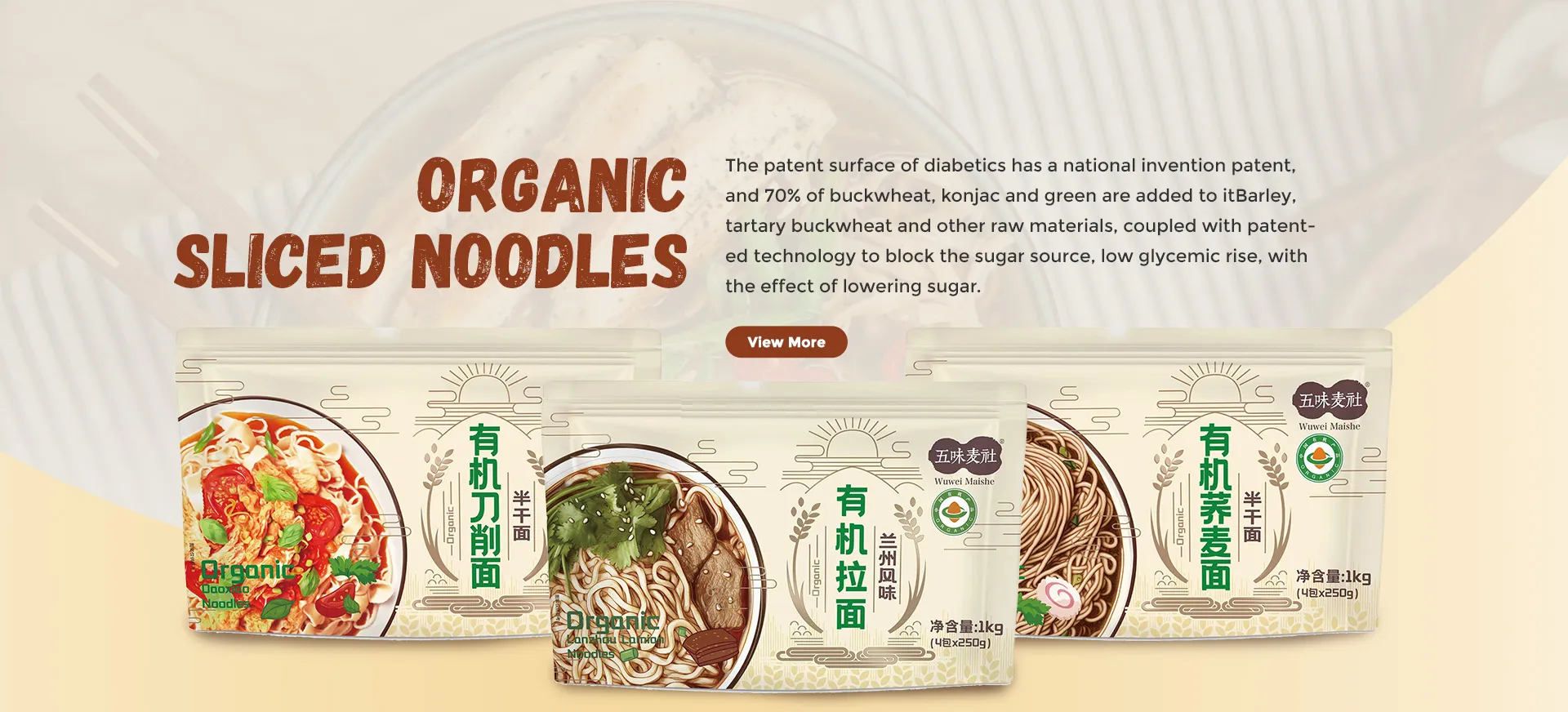whole wheat noodles
The Nutritional Benefits of Whole Wheat Noodles
Whole wheat noodles have gained popularity in recent years as a healthy alternative to traditional pasta. Made from whole grain wheat, these noodles retain the bran and germ, the most nutritious parts of the grain, making them an excellent choice for those aiming to incorporate healthier foods into their diets. This article delves into the nutritional benefits of whole wheat noodles, their versatility in cooking, and some delicious ways to enjoy them.
Nutritional Advantages
One of the primary benefits of whole wheat noodles is their higher fiber content compared to regular pasta. Fiber is essential for digestive health, helping to prevent constipation and promote regular bowel movements. A diet rich in fiber can also aid in weight management, as it helps to create a sense of fullness and reduces overall calorie intake.
Whole wheat noodles are also a good source of essential vitamins and minerals. They contain B vitamins, which are vital for energy production and maintaining healthy skin. Additionally, whole wheat is rich in iron, magnesium, and zinc—nutrients important for various bodily functions, including immune support and muscle function.
Moreover, whole wheat products have a lower glycemic index than their refined counterparts. This means that they cause a slower, more gradual increase in blood sugar levels, making them an outstanding option for individuals managing diabetes or those looking to maintain stable energy levels throughout the day.
Versatility in Cooking
One of the most appealing aspects of whole wheat noodles is their versatility. They can be used in a wide array of dishes, making them a staple in both traditional and modern cooking. Pairing them with various sauces, proteins, and vegetables allows for endless meal possibilities.
whole wheat noodles

For instance, whole wheat noodles can serve as the base for a hearty stir-fry
. Toss them with a variety of colorful vegetables like bell peppers, broccoli, and snap peas, along with your choice of protein—be it chicken, shrimp, or tofu. Add a splash of soy sauce and a hint of ginger for a quick and satisfying meal.Additionally, whole wheat noodles can incorporate well into soups. They can be added to minestrone or chicken noodle soup, enriching the dish with their nutty flavor and adding a nutritional punch. Another popular preparation is in cold noodle salads, where the whole wheat noodles are mixed with a refreshing dressing made from sesame oil, soy sauce, and rice vinegar, topped with sliced cucumbers and shredded carrots.
Easy Recipes to Try
1. Whole Wheat Noodle Stir-Fry Cook whole wheat noodles in boiling water. In a pan, sauté your favorite vegetables and protein, add the cooked noodles, and drizzle with soy sauce and sesame oil. Finish with sesame seeds and green onions.
2. Noodle Salad Mix cooled whole wheat noodles with halved cherry tomatoes, diced cucumber, and bell peppers. Toss with olive oil and a squeeze of lemon for a refreshing summer dish.
3. Whole Wheat Noodle Soup Sauté garlic and ginger, then add vegetable or chicken broth along with whole wheat noodles and your choice of veggies. Simmer until the noodles are cooked, then garnish with cilantro.
Conclusion
In conclusion, whole wheat noodles are a delicious and nutritious addition to any meal. Their high fiber content, rich nutrient profile, and versatility make them a smart choice for anyone looking to improve their diet. By incorporating whole wheat noodles into your meals, you can enjoy the benefits of whole grains while satisfying your palate with a variety of flavors and textures. So next time you're at the grocery store, consider swapping out regular pasta for whole wheat noodles and discover just how good healthy eating can be!
-
Is Whole Wheat Pasta Healthy?NewsMay.30,2025
-
Are Soba Noodles Good for Weight Loss?NewsMay.30,2025
-
Are Buckwheat Soba Noodles Healthy?NewsMay.30,2025
-
Are Buckwheat Soba Noodles Gluten Free?NewsMay.30,2025
-
Are Buckwheat Noodles Good for You?NewsMay.30,2025
-
A Healthy Way to Savor Soba and Spicy FlavorsNewsMay.30,2025
-
What Are Lanzhou Noodles?NewsMay.30,2025
Browse qua the following product new the we

















































































































